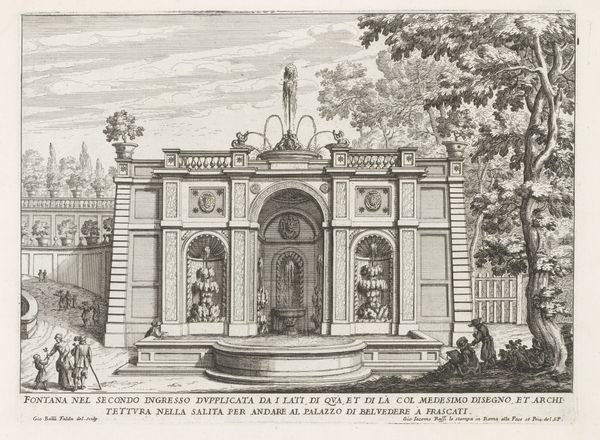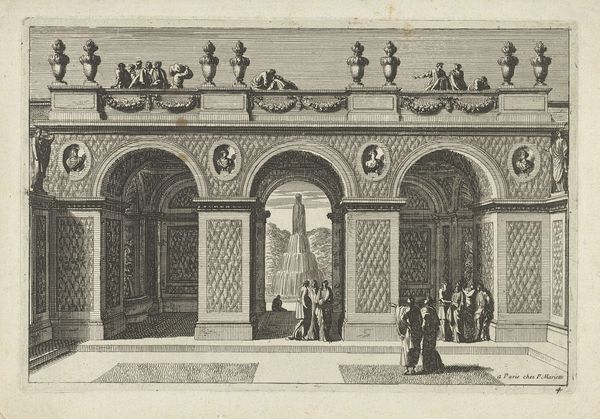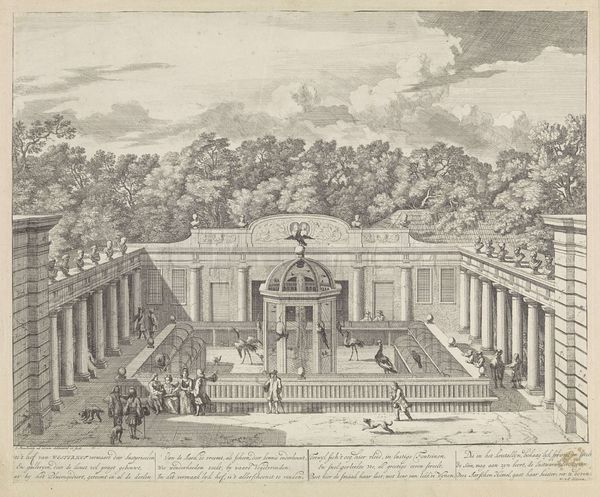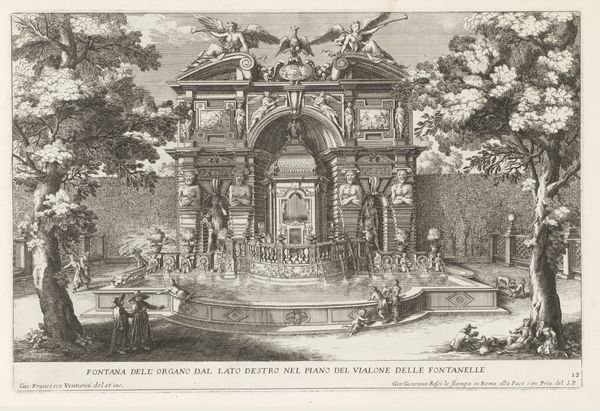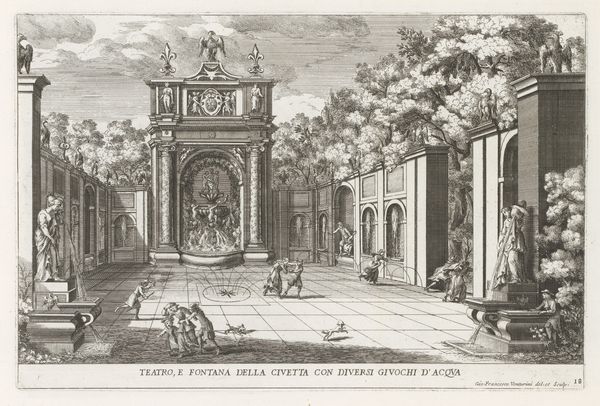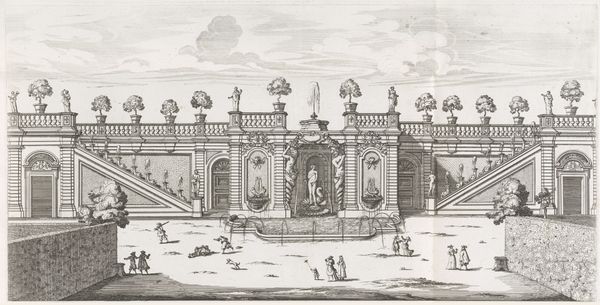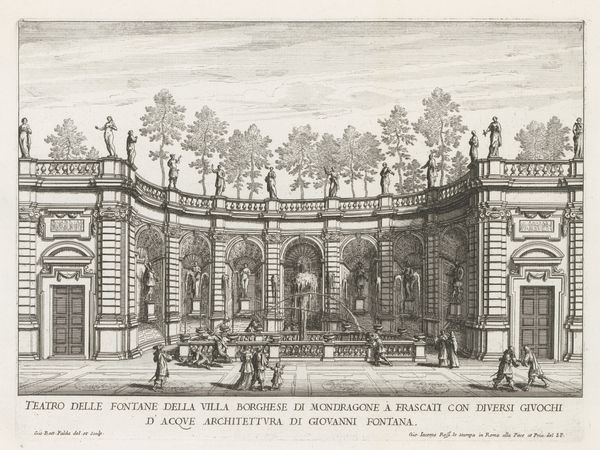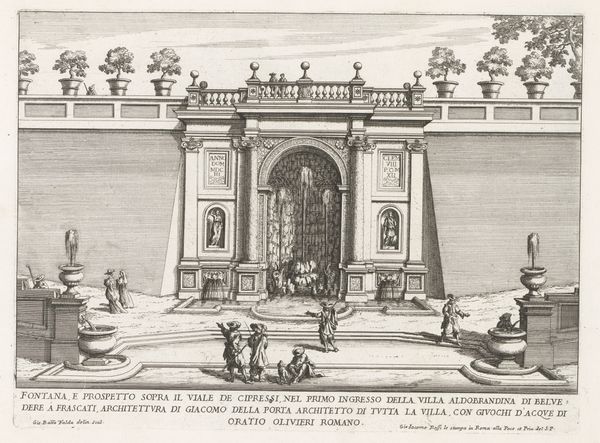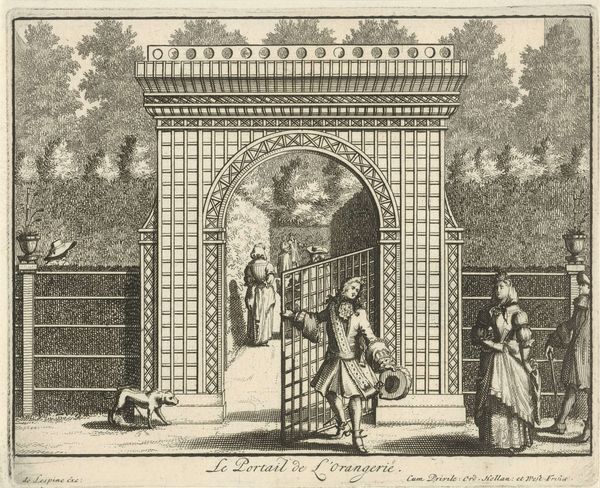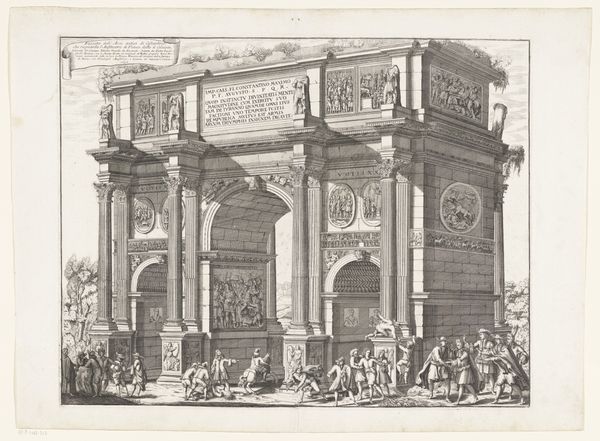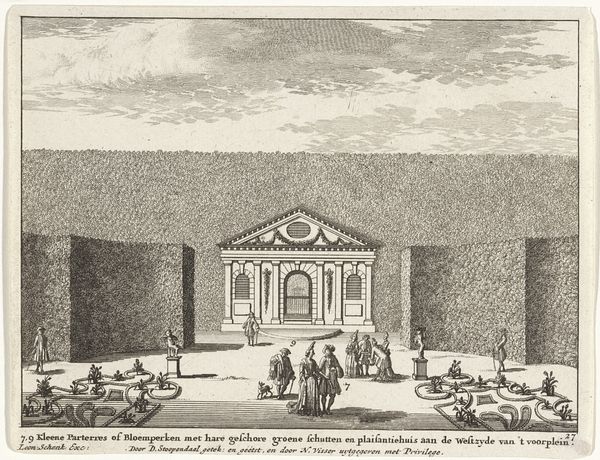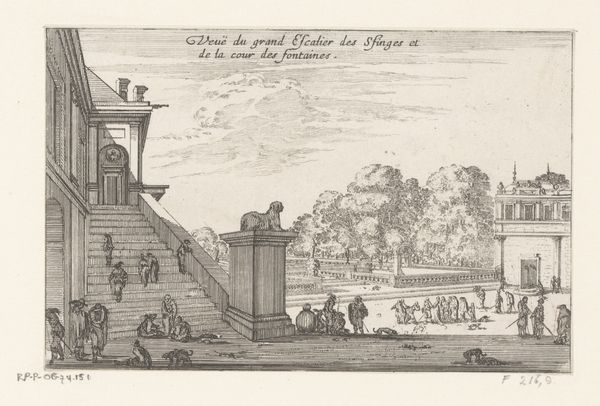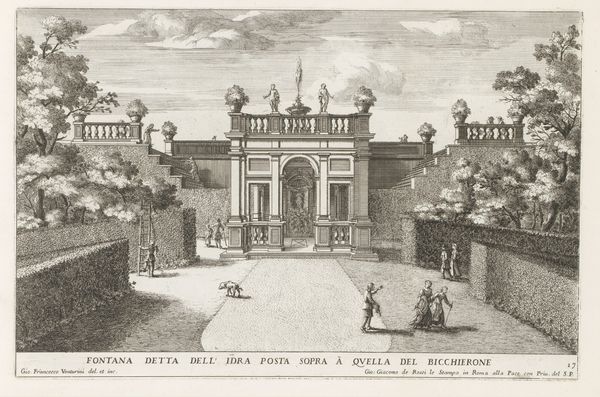
print, engraving, architecture
#
baroque
# print
#
landscape
#
history-painting
#
engraving
#
architecture
Dimensions: height 222 mm, width 307 mm
Copyright: Rijks Museum: Open Domain
Curator: What we have here is an engraving by Giovanni Francesco Venturini, dating from between 1653 and 1691. The work is titled “Tuin van een paleis te Rome,” or "Garden of a Palace in Rome." Editor: My first thought is of theatricality. There's a definite stage-like quality to the architecture, a sort of proscenium arch framing the fountain and figures. Curator: Indeed. Venturini’s print highlights a perspective view of a garden and palace, a landscape steeped in the aesthetics of the Baroque. Note the use of engravings as a popular medium to disseminate architectural ideas during that era. Editor: I find the architectural structure itself—the arches and staircases—interesting in how they play with power. The upward movement, the suggestion of elevation. It feels symbolic of hierarchical societal structures. Who has access to these spaces, who is allowed to ascend? Curator: That’s an excellent point. Gardens of this kind were powerful displays of wealth and influence. Consider the historical context: Rome, even then, was a hub of power, and these gardens were microcosms reflecting the social strata. The families who could afford these estates held immense sway. Editor: And those reclining river gods flanking the staircase! Their relaxed postures, the suggestion of abundance and control over natural resources… there's almost an arrogance there. Do you think the figures casually strolling around feel like accessories to emphasize this message, enhancing that impression of leisurely power? Curator: It’s certainly arguable. Venturini’s engraving not only showcased the design elements of the architecture but also captured the social dynamics that unfolded within it. The arrangement would certainly invite viewers to imagine the lives and activities of those who inhabited and visited such places. It's visual propaganda, if you will. Editor: I wonder, considering today’s crises of inequality, what interpretations resonate most strongly for contemporary audiences viewing this print. What stories are they inspired to construct of power? Curator: A powerful question. Looking back now, from our present moment, what once signified grandeur and sophisticated patronage may provoke questions of inequity and raise necessary questions of historical responsibilities.
Comments
No comments
Be the first to comment and join the conversation on the ultimate creative platform.

